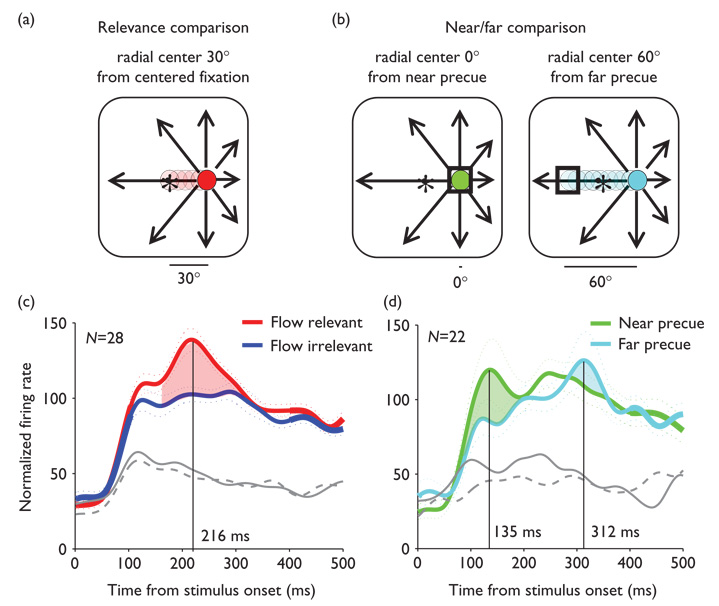Fig. 2.
Effects of exogenous cueing on transient response latency. (a) 30° traversal of covert spatial attention (red) from centered fixation to the location of the optic flow’s radial center (arrows). (b) Sustained covert spatial attention (green) when the flashed precue (square) overlies the location of the radial center (arrows). 60° traversal of covert spatial attention (blue) when the flashed precue (square) is opposite to the location of the radial center (arrows). (c and d) Spike density functions of responses to the preferred (colored) and antipreferred radial centers for neurons having significant effects (gray, solid is relevant optic flow and near precued; dashed is irrelevant optic flow and far pre-cued). (c) Average normalized responses (±s.e.) as spike density functions during flow-relevant (red) and flow-irrelevant (blue) trials diverge from 120–300 ms, reaching maximal flow-relevant enhancement at 216 ms. (d) Spike density functions of responses in the near precue trials (green) peak at 135 ms after stimulus onset, whereas responses in the far precue trials (light blue) peak at 312 ms.

